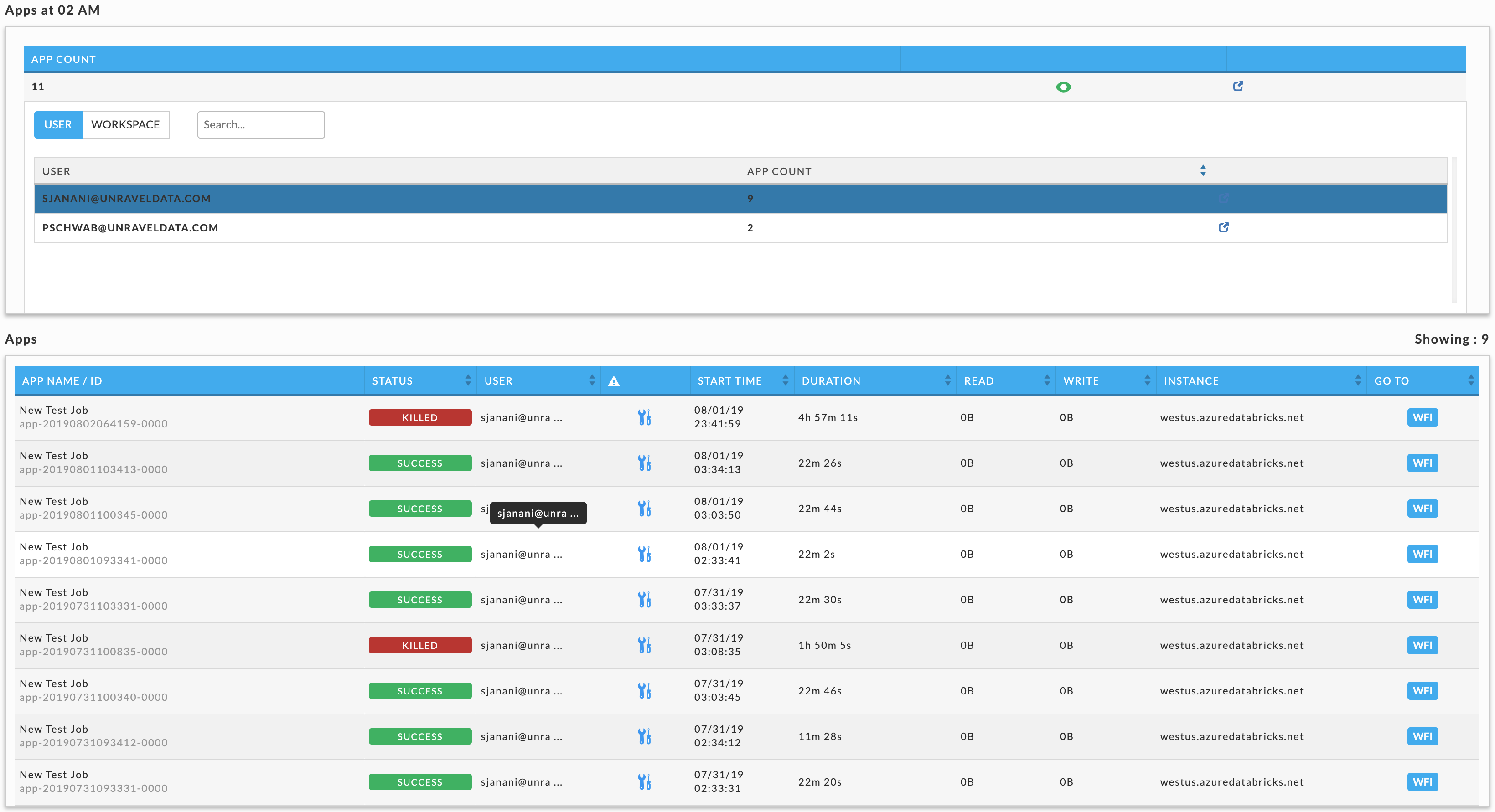Operational Insights
Azure Databricks

Usage Trending - a trend report by user and workspace.
Chargeback - chargeback report.
Cluster Workload - shows the aggregated workload for all clusters.
When you can specify a date range or instance, the pull down menu for it is on the right-hand side of the Operational Insights title bar. By default, it opens showing Chargeback tab grouped by Application Type, for all clusters over the last 24 hours.
Note
See Common UI Features or general information and common features about Unravel's UI.
Usage trending
This shows the usage trending By Workspace and By User. By default, the window opens showing all instances, workspaces, and users for the current day in 30 minute increments. You can select the date range, time period and instance in the Operational Insights title bar. You can select a subset of user or workspaces using the pull down on the right above the graphs.
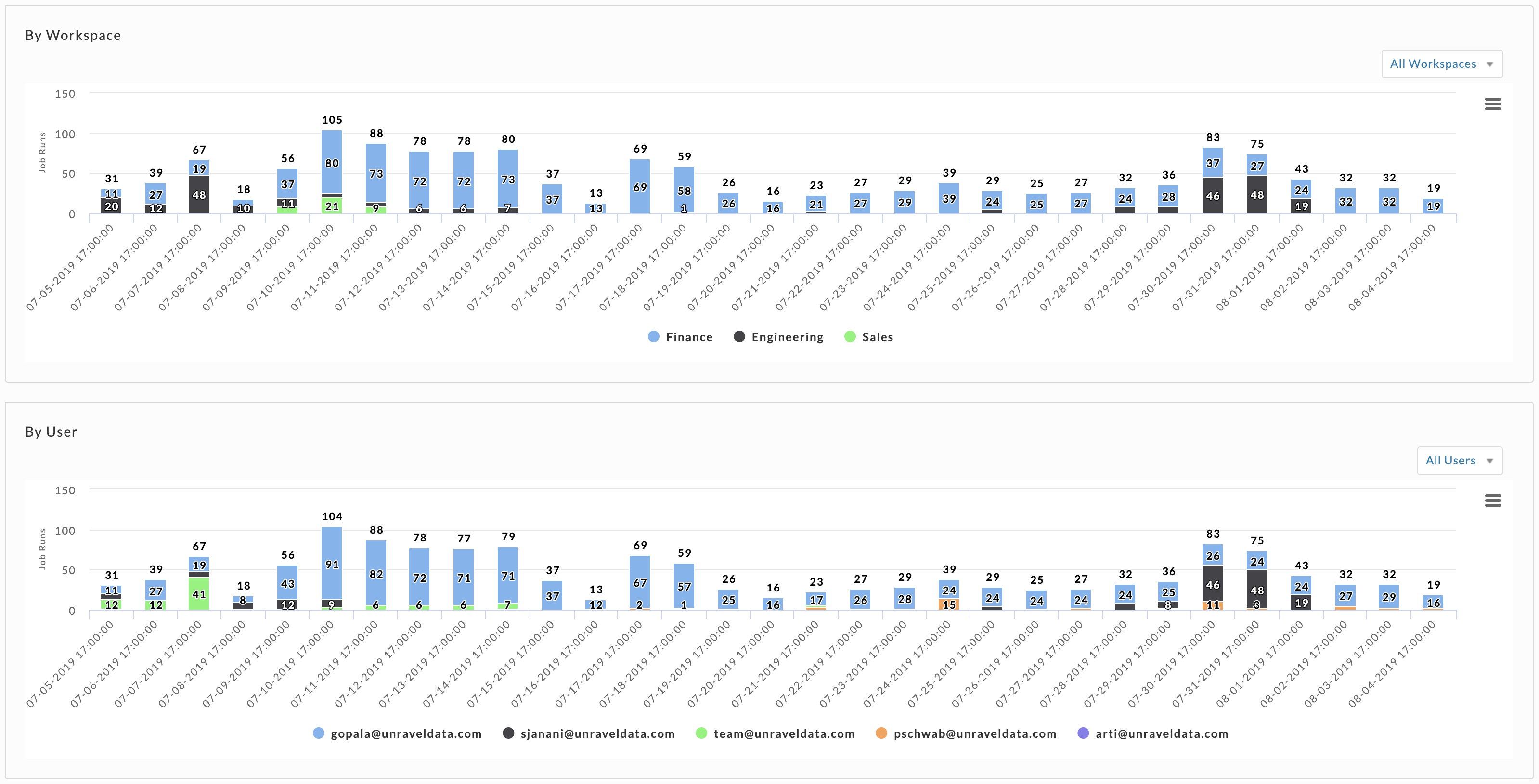
Chargeback
The tab is divided into three sections filtered by the Group By selection.
Donut graphs showing the top results.
Chargeback report showing usage.
List of all apps.
You can set the date range and the instance to use for the report in the Operational Insights title bar. Use the Group By to filter the information. By default, User is selected. Each time you select an Other option it is added to the Group By list. If two Group By options are selected, the sort priority is noted. Click an option to deselect it. In the example below the report is filtered on User. Note, that while you can Group By tags, you can not by tag values. For instance, given <project, projname> you can Group By on <project> but not <projname>.
Clicking a Group By selection toggles it and changes the sort priority. If you only have one group value selected you can not deselect it until you select another one, i.e., there must always be one Group By choice selected. Using the below example, if you would have select Workspace or an Other tag to be able to deselect User.
A new chargeback report is generated each time you change the Group By filters. All the reports and donut graph are filtered by your Group By choices. You can download the Chargeback report and the apps list by selecting Download CSV on the right-hand side above the report.
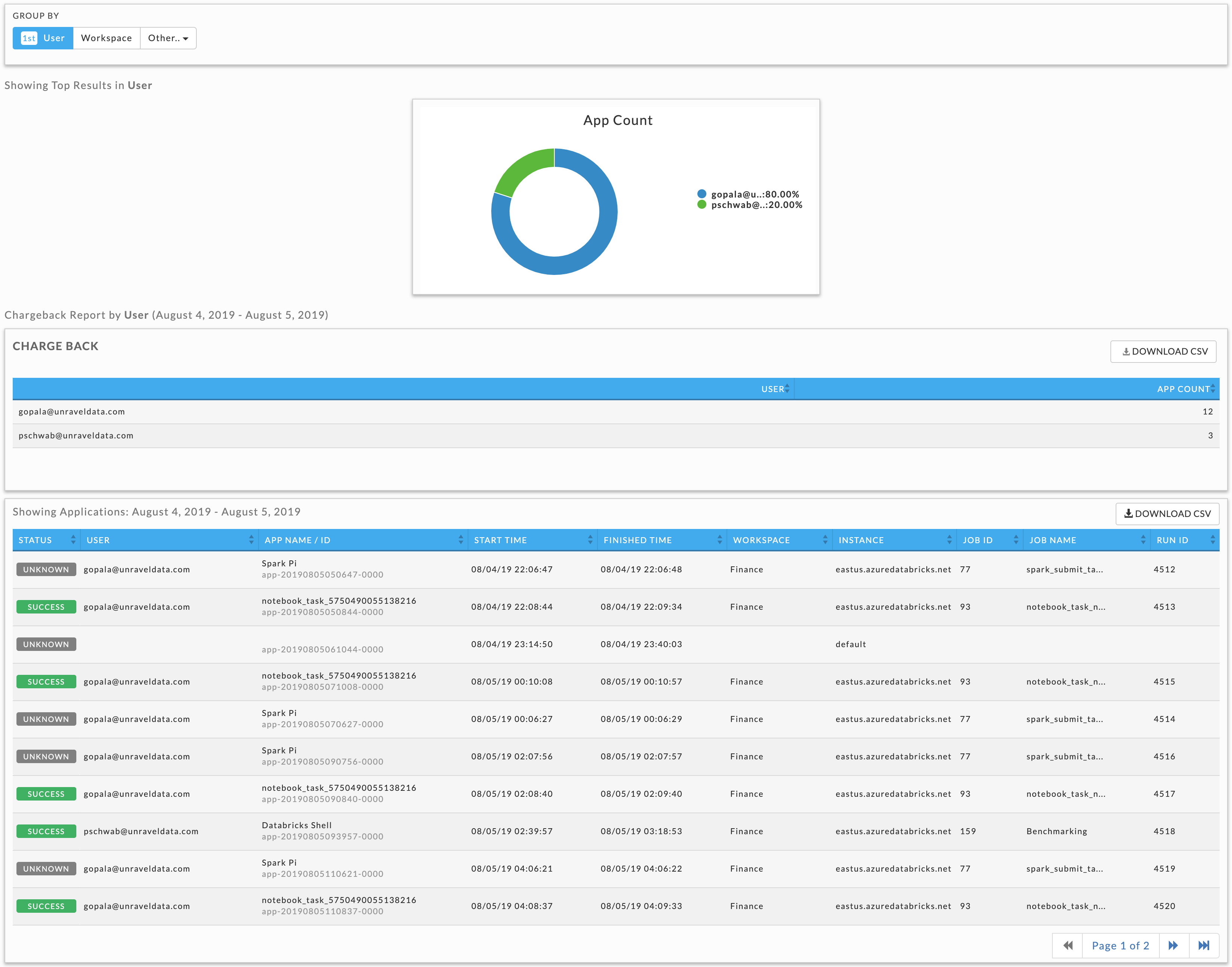
Cluster workload
This displays your instance workload, so you can see when your workload is heaviest, etc. It displays the workload by:
Month: By date, for example, July 30.
Hour: By hour regardless of date, for example, 10.00 - 11.00.
Day: By weekday regardless of date, e.g., Tuesday.
Hour/Day: By hour for a given weekday, e.g.,10.00 -11.00 on Tuesday (a heatmap).
Note
The app count is not a count of unique app instances because apps can span boundaries, i.e., begin and end in different hours/days.
The app count reflects the apps that were running within that interval up to and including the boundary, i.e., date, hour, day. Therefore, an app can be counted multiple times in any given time period.
On multiple dates, or example, July 30 and 31.
In multiple hours, for example, 2 AM and 3 AM.
On multiple days, Tuesday and Wednesday.
In multiple hour/day slots.
This results in anomalies where the Sum(24 hours in Hour/Day app count) > Sum(app counts for dates representing the day).
We point this out not because it necessarily has a significant impact in how you can use the data, but to inform you such variations exist.
When you can specify a date range or instance, the pull down menus are on the right-hand side of the Operational Insights title bar. We recommend using a short date range, as bigger ranges take up more processing time. By default, it opens showing the Month tab for the past week across all instances.
Click the View By buttons to change between views. For the Hour, Day and Hour/Day you can view the data as an Average or Sum.
See Drilling Down below for information on how to retrieve the detailed information within each view.
Displays the jobs run by date. The color indicates how the day's load compares with the other days within the date range. The day with the least jobs/hours is  , while the days with the highest load are
, while the days with the highest load are  . Therefore, the color of any particular day varies in context to the other days being displayed. For example, when only one day is displayed it is colored
. Therefore, the color of any particular day varies in context to the other days being displayed. For example, when only one day is displayed it is colored  . Use Previous and Next in the month's title bar to navigate between months.
. Use Previous and Next in the month's title bar to navigate between months.
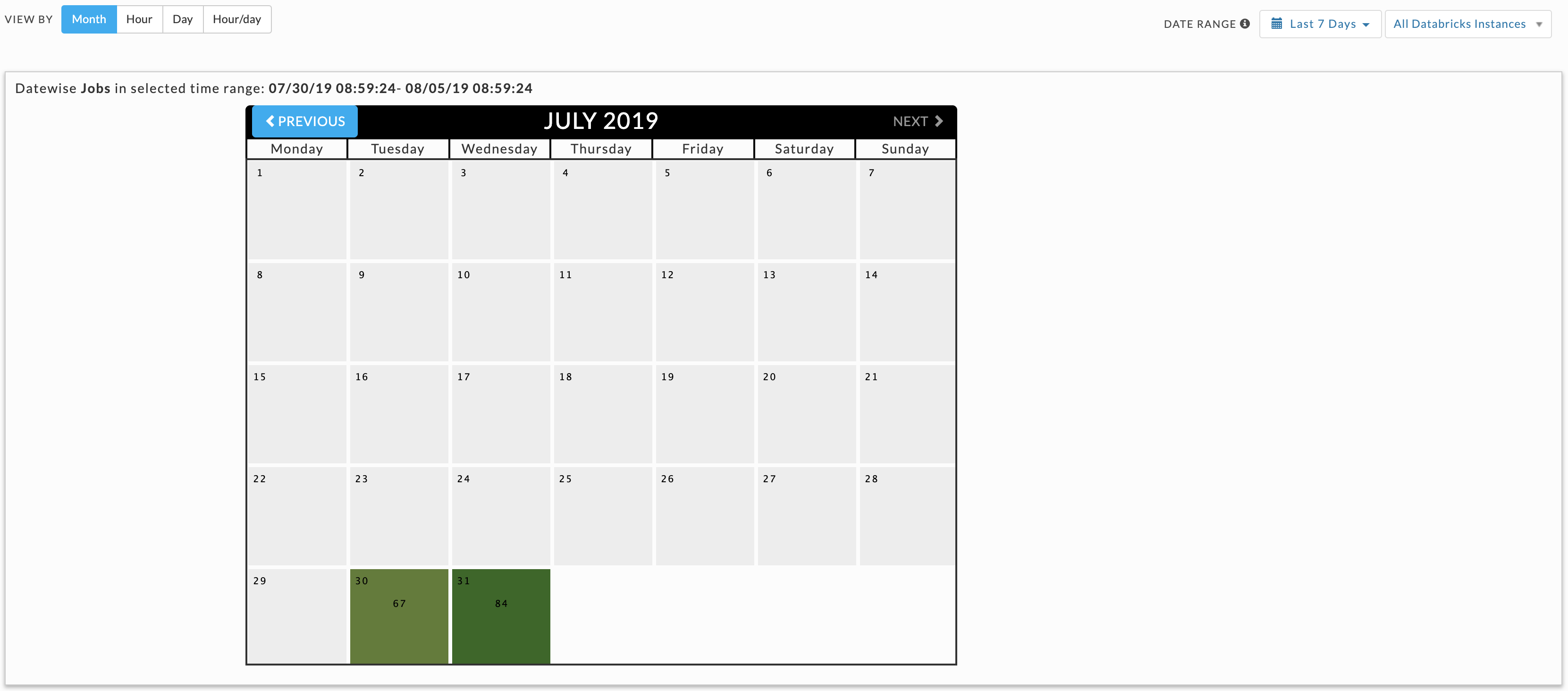
These graphs do not link jobs to any specific date. For instance, the Hour graph shows that 11 jobs ran at 2 AM (between 2 AM and 3 AM); the Day graph that 78 jobs ran on Wednesday, and the Hour/Day that five jobs ran at 2 am on a Wednesday. But none of these graphs indicate the date these jobs ran on. Only the Month view links the job counts to a specific date; above we see 22 July had an app count of 77.
You have the choice to display the data as either the:
Sum: Aggregated sum of job count during the time range (default view).
Average: Aggregated sum of job count average across the time slice, for instance (Sum of all jobs which ran on Wednesday)/(Number of Wednesday's in the Sample).
Breaks out information by hour. The interval label indicates the start, i.e., 2 AM is 2 AM -3 AM. Hover over an interval for its details. Click the interval to drill down into it.
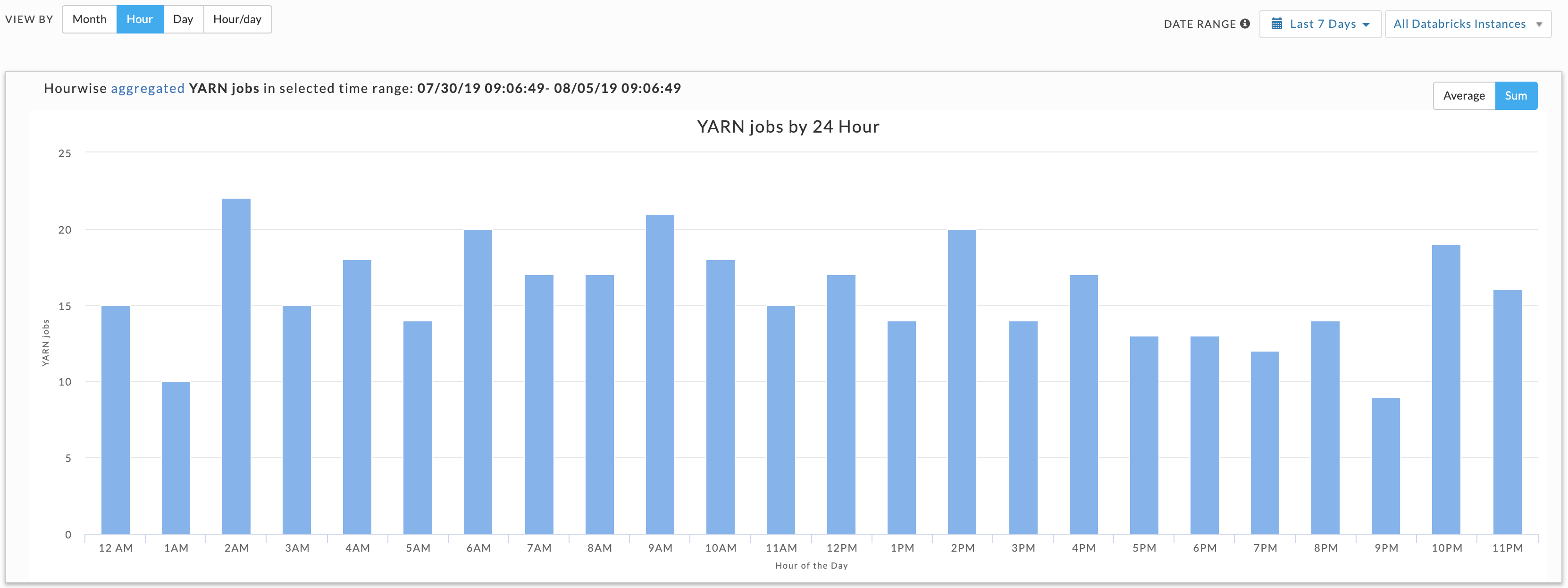
Displays the jobs run on a specific weekday. Hover over an interval for its details. Click the interval to drill down into it.
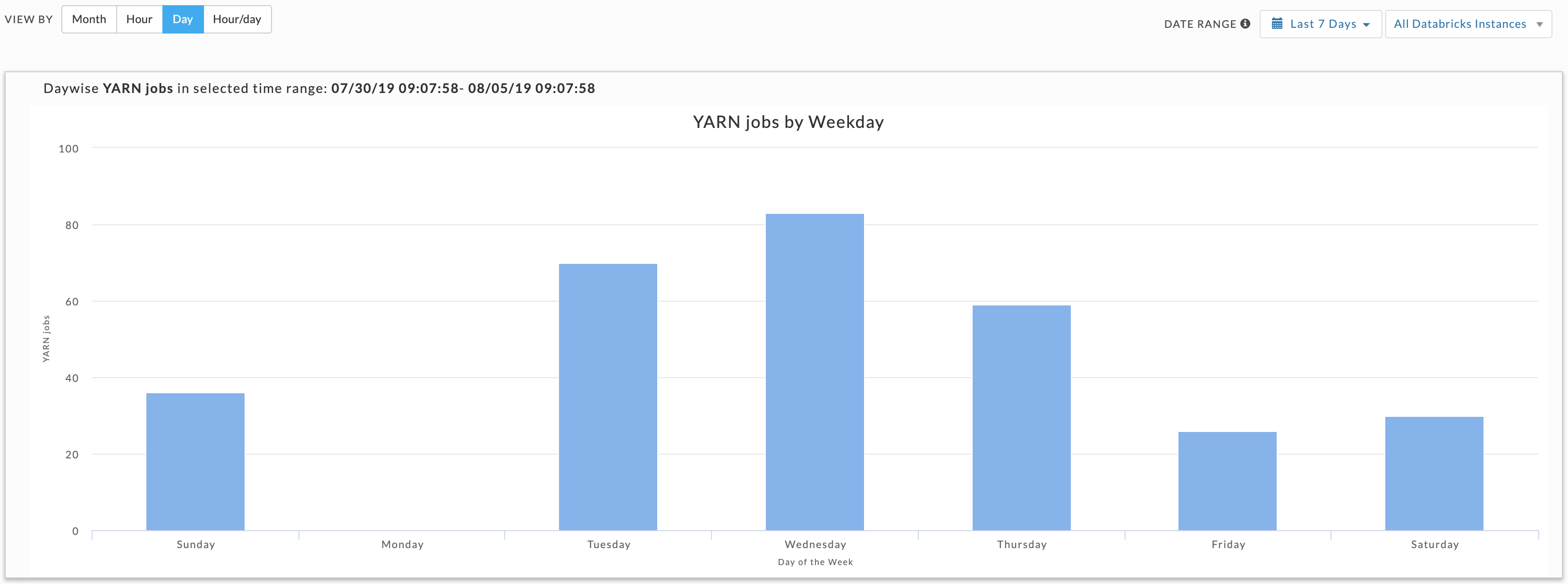
This view shows the intersection of Hour and Day graphs, it's basically a heatmap. The Hour graph showed 11 jobs ran between at 2-3 AM while the Day graph (immediately above) shows that 78 jobs ran on Wednesday. Below we see that five of Wednesday's jobs ran between 2-3 AM.
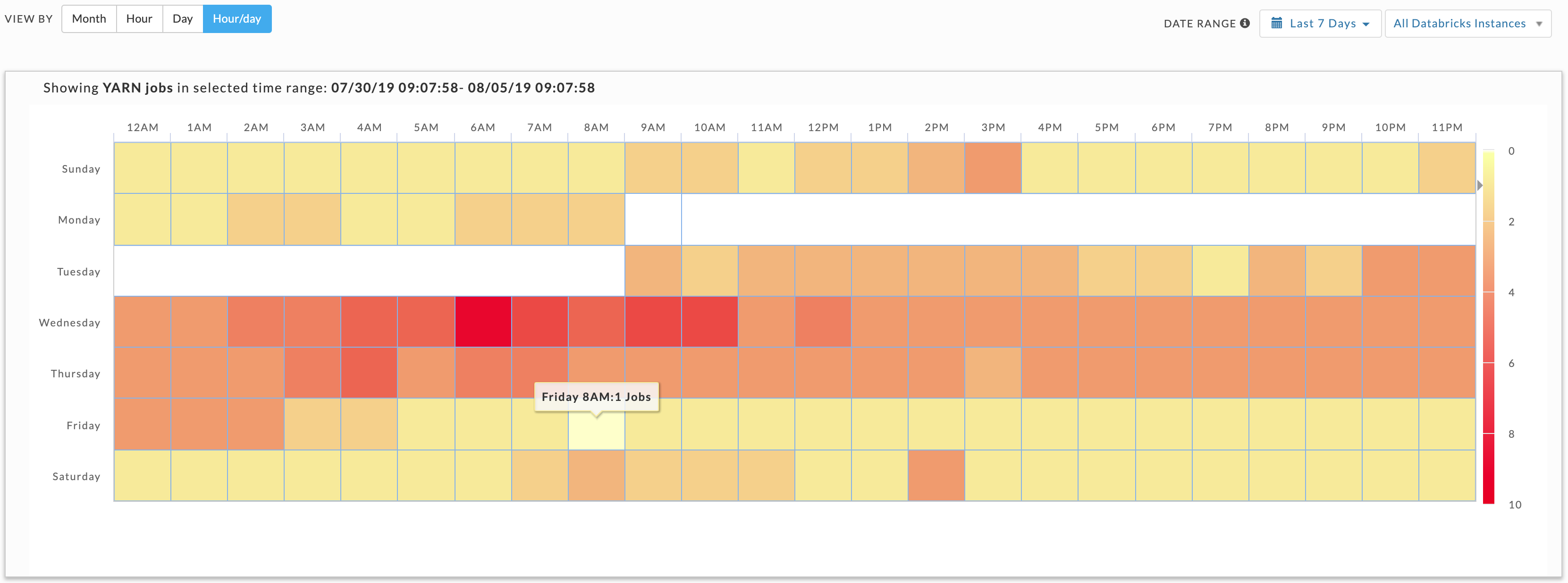
Click an interval to bring up its information. In this example we clicked on the Hour view for 2 AM. There were two users who were running apps at that hour. Immediately above the table on the left-hand side it notes what is being displayed, in this case Apps at 09 AM.

Click  to display all the apps running during the hour. Click
to display all the apps running during the hour. Click  to display User or WORKSPACE details. By default, User is displayed, click Workspace to see the apps distributed across the relevant workspaces Click
to display User or WORKSPACE details. By default, User is displayed, click Workspace to see the apps distributed across the relevant workspaces Click  to see the apps for a specific user or workspace. When there are multiple row, an expanded row has a green block
to see the apps for a specific user or workspace. When there are multiple row, an expanded row has a green block  displayed.
displayed.
In the example below the first user information is displayed. Click an app to bring it up in its APM.
